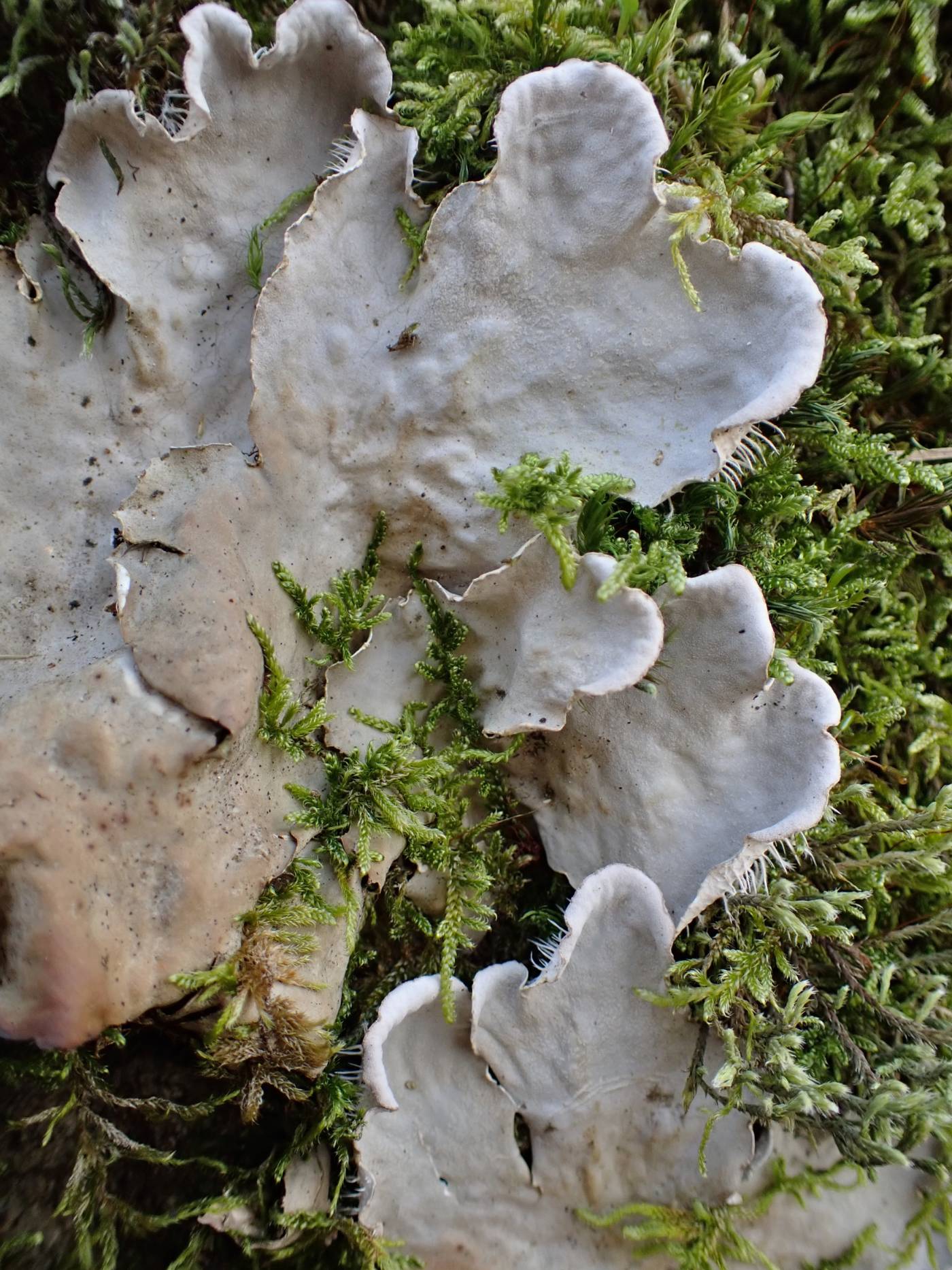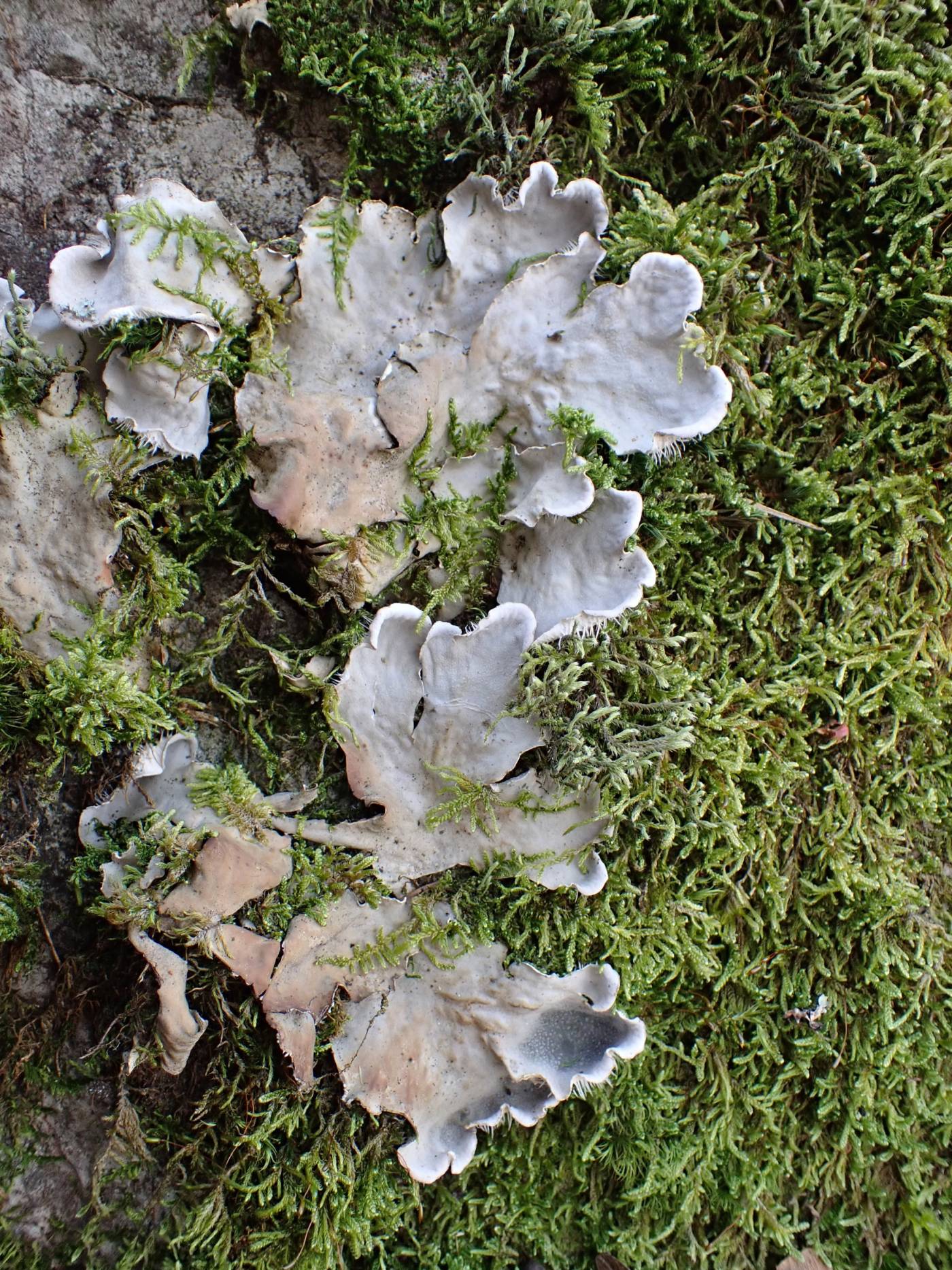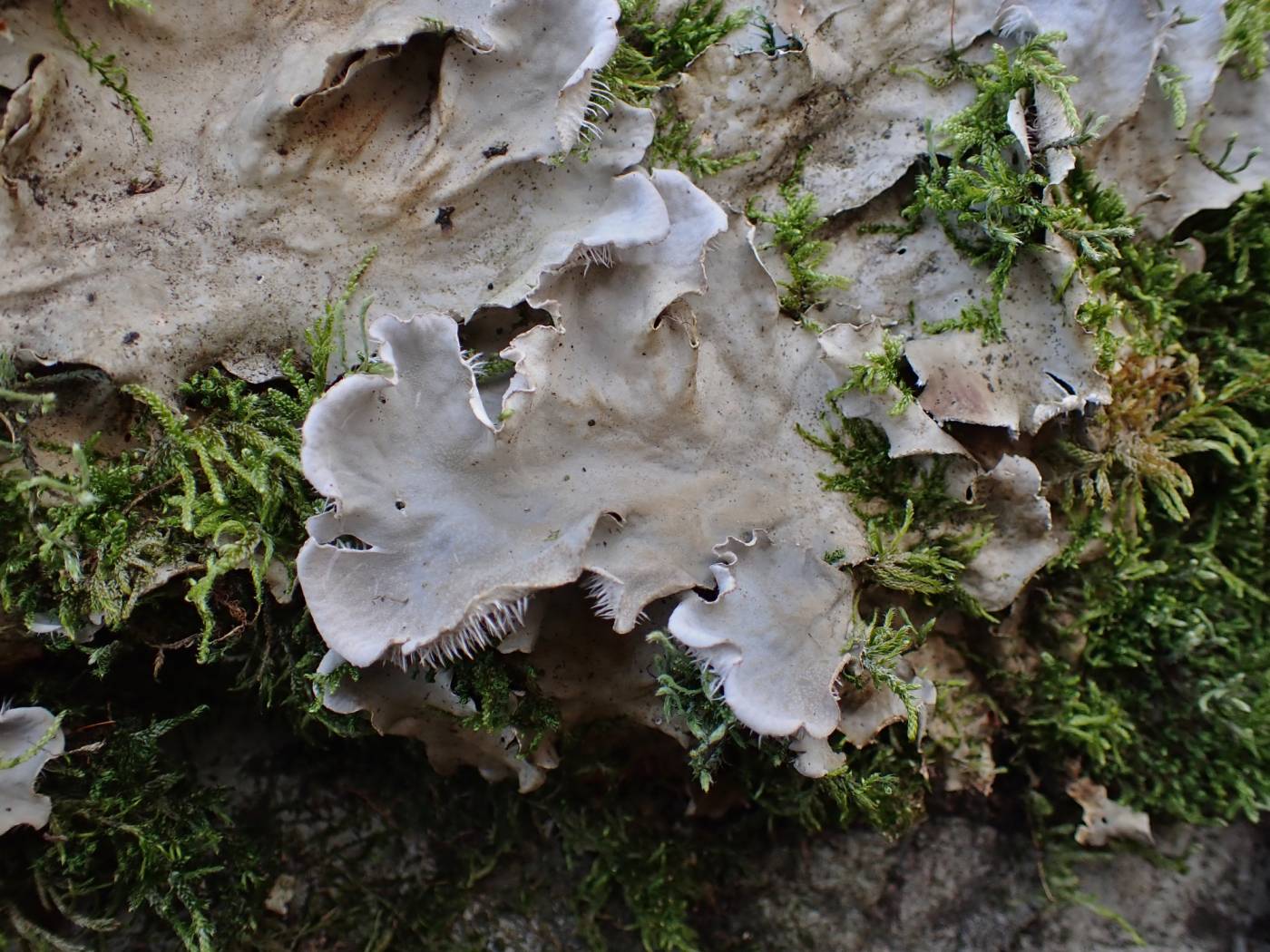Peltigera species macroscopically resembling P. canina, but with more or less simple to slightly branched rhizines, which are distinctly tomentose. Similar, but brush-like rhizines has P. membranacea. This taxon has not yet been formally described, although it has appeared in the literature for more than 20 years (Miadlikowska & Lutzoni 2000). At least within Europe, it is likely to be a widely distributed species. It prefers mossy rocks in forest environments (Timdal & Gjerlaug 2023). In the Czech Republic, the species is so far known from three localities in the Šumava Mts, Velká kotlina in Hrubý Jeseník Mts, Týřov and Velké Pleš in the Křivoklát region. It is likely that a substantial part of the earlier Czech records of P. membranacea will apply to it.
Literature: Miadlikowska J. & Lutzoni F. (2000): Phylogenetic revision of the genus Peltigera (lichen-forming Ascomycota) based on morphological, chemical, and large subunit nuclear ribosomal DNA data. – International Journal of Plant Science 161: 925–958. Vondrák J. et al. (2022): From Cinderella to Princess: an exceptional hotspot of lichen diversity in a long-inhabited central-European landscape. – Preslia 94: 143–181. Timdal E. & Gjerlaug H. C. (2023): DNA barcodes reveal unrecognized species diversity in Peltigera sect. Peltigera in Norway, including the new species P. jonii. – Graphis Scripta 35: 30–65.
taxonomic classification:Ascomycota → Lecanoromycetes → Peltigerales → Peltigeraceae → Peltigera
Red List (Malíček 2023):DD – data deficient
Occurrence in the Czech Republic
All records: 8, confirmed 8. One click on a selected square displays particular record(s), including their source(s).



